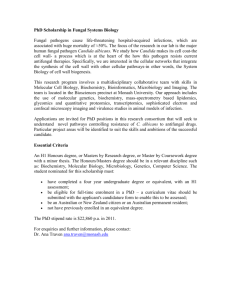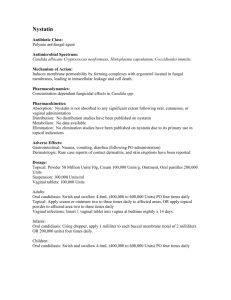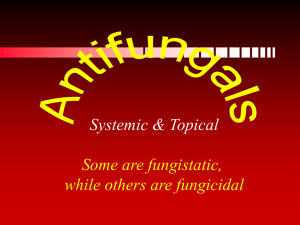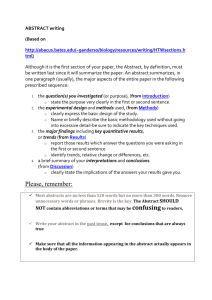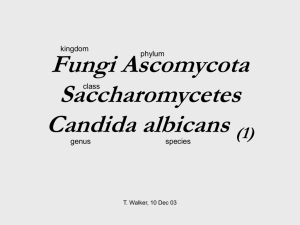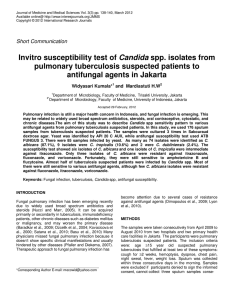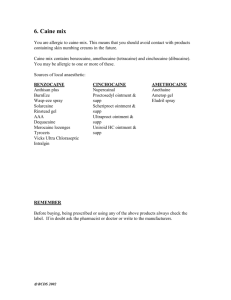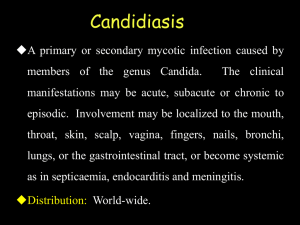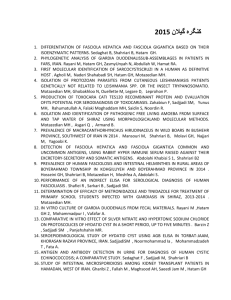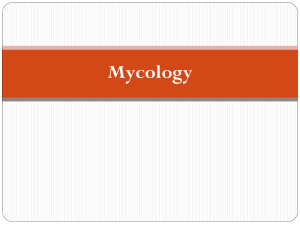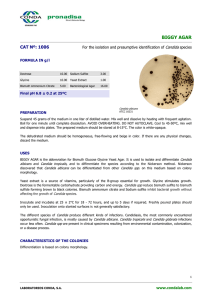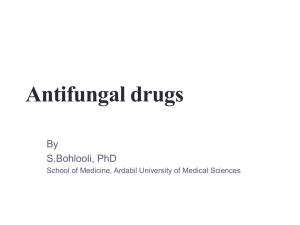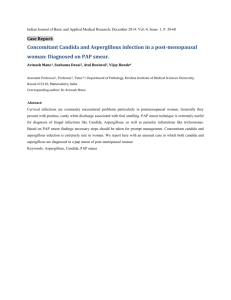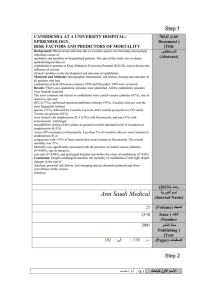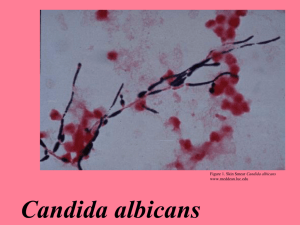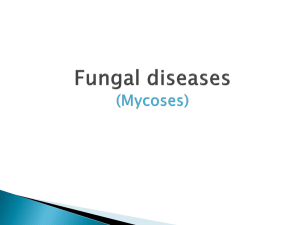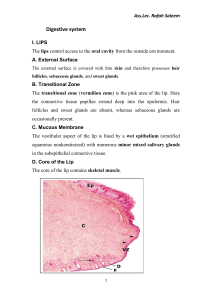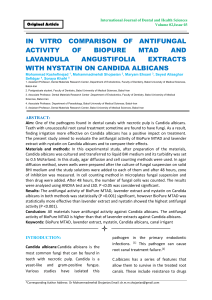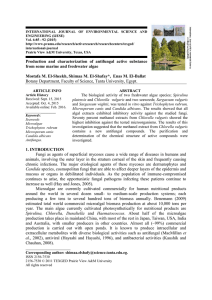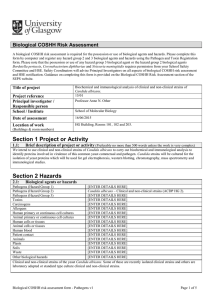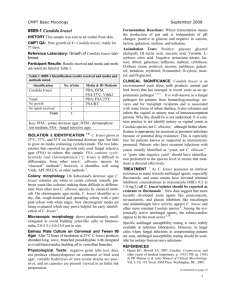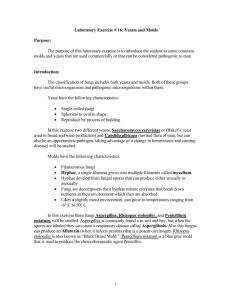MUCOSAL ALTERATIONS
advertisement
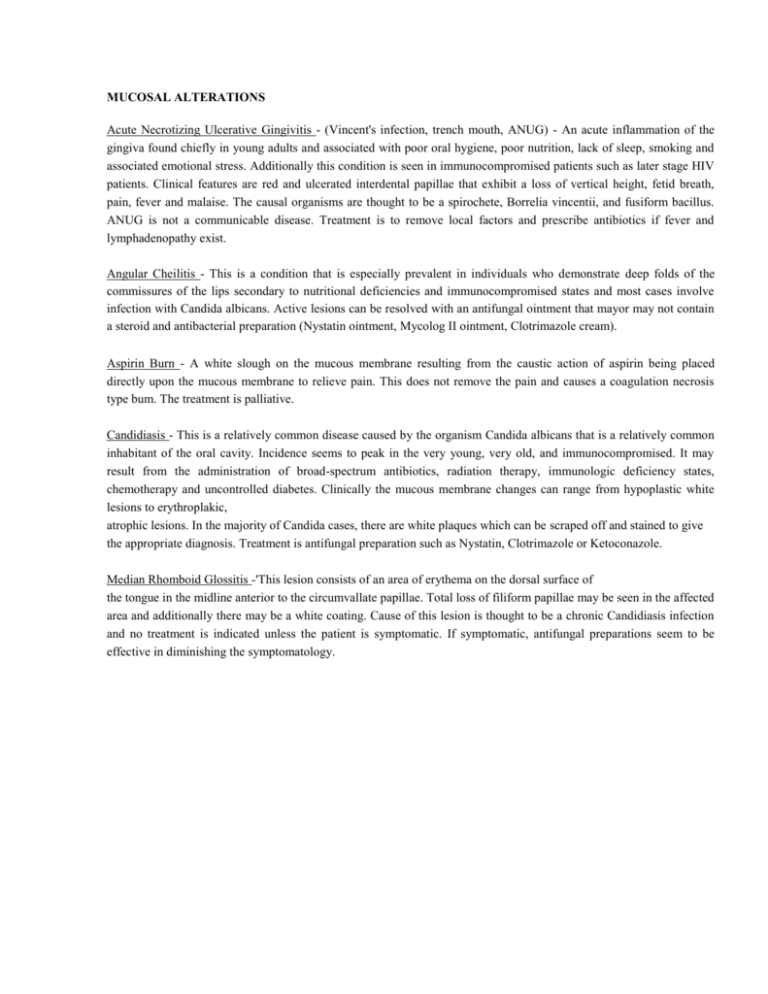
MUCOSAL ALTERATIONS Acute Necrotizing Ulcerative Gingivitis - (Vincent's infection, trench mouth, ANUG) - An acute inflammation of the gingiva found chiefly in young adults and associated with poor oral hygiene, poor nutrition, lack of sleep, smoking and associated emotional stress. Additionally this condition is seen in immunocompromised patients such as later stage HIV patients. Clinical features are red and ulcerated interdental papillae that exhibit a loss of vertical height, fetid breath, pain, fever and malaise. The causal organisms are thought to be a spirochete, Borrelia vincentii, and fusiform bacillus. ANUG is not a communicable disease. Treatment is to remove local factors and prescribe antibiotics if fever and lymphadenopathy exist. Angular Cheilitis - This is a condition that is especially prevalent in individuals who demonstrate deep folds of the commissures of the lips secondary to nutritional deficiencies and immunocompromised states and most cases involve infection with Candida albicans. Active lesions can be resolved with an antifungal ointment that mayor may not contain a steroid and antibacterial preparation (Nystatin ointment, Mycolog II ointment, Clotrimazole cream). Aspirin Burn - A white slough on the mucous membrane resulting from the caustic action of aspirin being placed directly upon the mucous membrane to relieve pain. This does not remove the pain and causes a coagulation necrosis type bum. The treatment is palliative. Candidiasis - This is a relatively common disease caused by the organism Candida albicans that is a relatively common inhabitant of the oral cavity. Incidence seems to peak in the very young, very old, and immunocompromised. It may result from the administration of broad-spectrum antibiotics, radiation therapy, immunologic deficiency states, chemotherapy and uncontrolled diabetes. Clinically the mucous membrane changes can range from hypoplastic white lesions to erythroplakic, atrophic lesions. In the majority of Candida cases, there are white plaques which can be scraped off and stained to give the appropriate diagnosis. Treatment is antifungal preparation such as Nystatin, Clotrimazole or Ketoconazole. Median Rhomboid Glossitis -'This lesion consists of an area of erythema on the dorsal surface of the tongue in the midline anterior to the circumvallate papillae. Total loss of filiform papillae may be seen in the affected area and additionally there may be a white coating. Cause of this lesion is thought to be a chronic Candidiasis infection and no treatment is indicated unless the patient is symptomatic. If symptomatic, antifungal preparations seem to be effective in diminishing the symptomatology.
